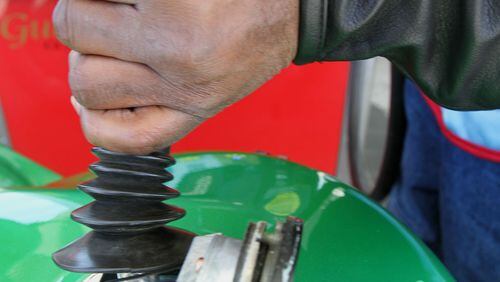The government has been tracking fuel economy for nearly a century -- long before anybody cared much about fuel economy.
This was obviously the case, since all vehicles on the road got roughly 14 miles per gallon in 1923, and the average had declined to 11.9 mpg by 1973. That, of course, was the year of the first OPEC embargo, and Americans suddenly got interested in saving gas. By 1991, the all-vehicles average had risen to 16.9 mpg. That average would just keep climbing, right? Well, not exactly.
Credit: Andria Brooks
Credit: Andria Brooks
This is all according to the Transportation Research Institute at the University of Michigan, which just released “On-road Fuel Economy of Vehicles in the United States: 1923-2013,” authored by Michael Sivak and Brandon Schoettle.
In the 22 years between 1991 and 2013, the institute found, fuel economy improved a paltry 0.7 mpg, to 17.6, the institute found.
This period witnessed the rise of the SUV, which was nobody’s idea of fuel-efficient. But the crossover -- the combination of minivan, SUV and sedan, like the Honda CRV or the Toyota RAV4 – has long since eclipsed the giant SUV, both in sales and in fuel economy.
The Transportation Research Institute points out that the 17.6 mpg figure is an average of all vehicles on the road, regardless of size or age: "One fundamental problem with improving the fuel economy of the entire on-road fleet is that improvements in fuel economy of new vehicles take a long time to substantially influence the fuel economy of the entire fleet," the report said. "This is the case because it takes many years to turn over the fleet."
HIS Automotive reported last year that the average age of vehicles on the road was 11.4 years, which means that advances in fuel efficiency today will take a long time to show up on the road.
So, yes, the government’s latest CAFÉ standard – Corporate Average Fuel Economy requirements that were first enacted in 1975, by the way – may by 54.5 mpg by 2025. But it’ll take the whole fleet on the highway a long time to get there.
The TRI also notes that the government has frequently changed the way it classifies vehicles for the purpose of tracking miles per gallon. From 1923 to 1935, the government counted all vehicles; then, for 30 years, it calculated separate estimates for cars and trucks (motorcycles were counted as cars); later it divided trucks into light-, medium- and heavy-duty groups. SUVs were classed as light trucks, a designation that covered all two-axle, four-wheel trucks at the time. Even this category has since been subdivided, according to wheel base, the institute report notes.







